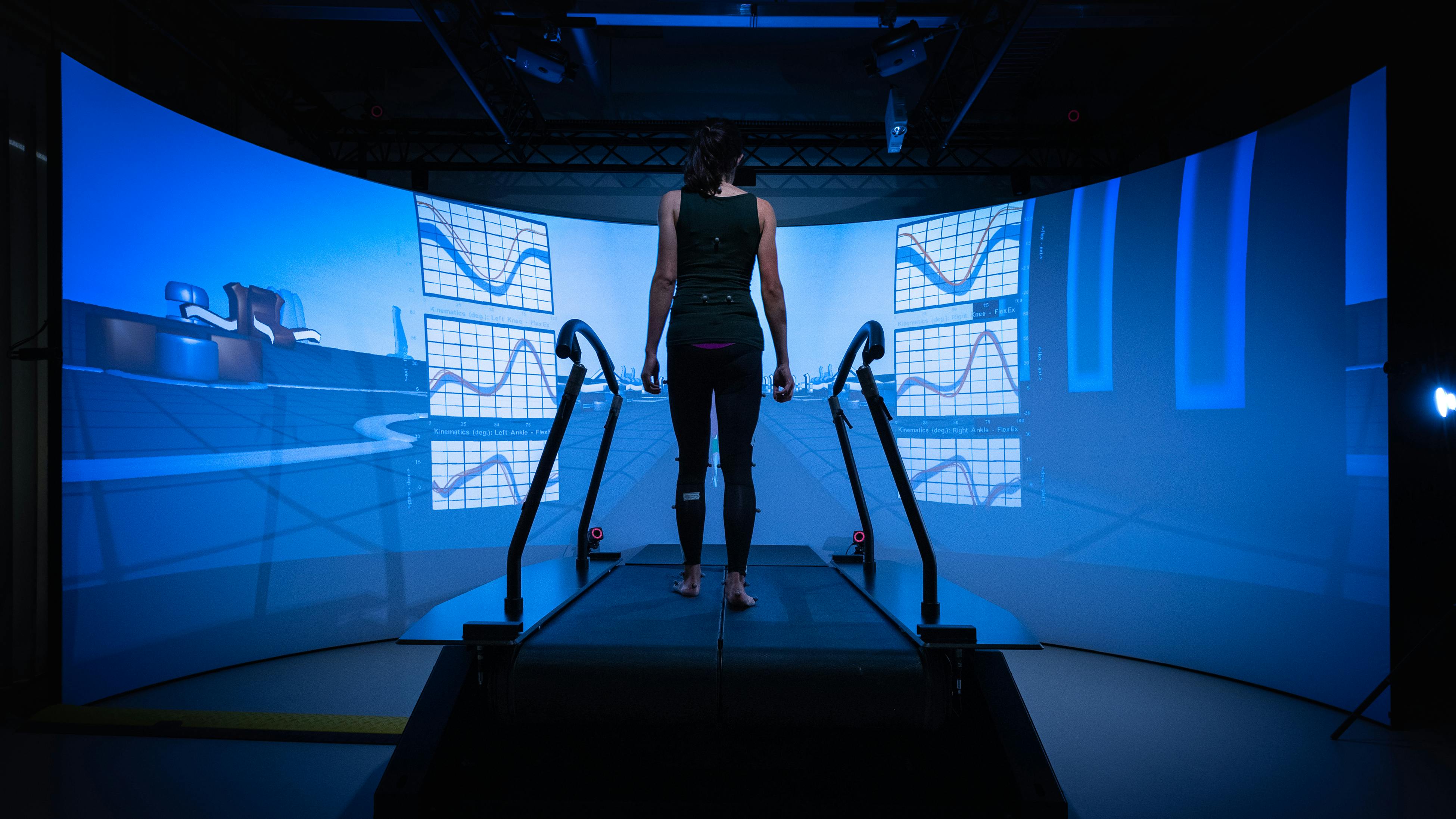
Mobility for stroke and Parkinson’s patients
Many patients who have suffered a stroke or have Parkinson’s disease experience difficulty walking or are at high risk of falling. In light of this, the research team headed by Professor Andreas Luft set itself the objective of developing a therapy for mobility issues associated with both illnesses, improving the quality of life for those affected in the process. As part of their «StimuLOOP» project, the team will assess how patients walk and supervise subsequent training exercises. The patients will then be able to consolidate what they have learned during phases of deep sleep.
Contact
Professor Andreas Luft MD
Chief of Service at the Department
of Neurology of University Hospital
Zurich and Head of the Stroke Team
at the Stroke Center Zurich
Professor in the Faculty of Medicine
of the Unversity of Zurich
+41 44 255 45 06
E-Mail
UMZH institutions
University of Zurich
University Hospital Zurich
ETH Zurich
University Children’s Hospital Zurich
Team
Free, independent movement is synonymous with a good quality of life
What constitutes a good quality of life? The answer that most people would give to this question is the freedom to move about independently. Many patients who have suffered a stroke or have Parkinson’s disease have lost this freedom. They may have difficulty walking or be at severe risk of falling. Moving about is an exhausting and laborious process for them. Stroke specialist and Chief of Service Andreas Luft from the Department of Neurology at University Hospital Zurich (USZ) treats patients of all ages who have had a stroke. «Many patients still find walking very difficult even after long periods of rehabilitation,» explains Professor Luft. «They are too unsteady to walk about outside or move too slowly to be able to cross a road. Many of them are isolated in their own homes and find it almost impossible to even go from one room to another. They lose their jobs and their social lives.»
StimuLOOP is a perfect example of precision medicine
Parkinson’s sufferers often also have difficulty walking, although the causes of this are different. Professor Luft and his colleague, Parkinson’s specialist Christian Baumann from USZ, are now working with other research partners of UMZH on a project to improve the treatments for both these groups. Dr. Meret Branscheidt is also part of the team. A chief of service, she cares for patients with a wide range of neurological disorders at the «cereneo» clinic, a center for neurology and rehabilitation at Lake Lucerne. She carries out her research at the University of Zurich and University Hospital Zurich’s Department of Neurology. Here she deals with the changes seen in patients who have suffered a stroke, as well as the recovery process. Her focus is on neuronal processes that underlie the motor learning capabilities of both healthy people and those suffering from diseases. Meret Branscheidt completed a two-year post-doctoral scholarship at the John Hopkins University, Baltimore, USA, and has vast experience in the use of non-invasive brain stimulation technologies. In the past she has successfully led clinical studies involving acute and chronic stroke patients.
Together, researchers working on the StimuLOOP project are now aiming to revolutionize patients’ prospects. «We want to improve patients’ long-term walking functions. And, indeed, with help from personalized gait training programs that are tailored to the individual in question», explains Meret Branscheidt. Andreas Luft’s main motivation is to improve patients’ situation: “Currently, we cannot offer some of them any further treatment after the rehabilitation has ended. Our goal is to enable them to live an independent life again.»
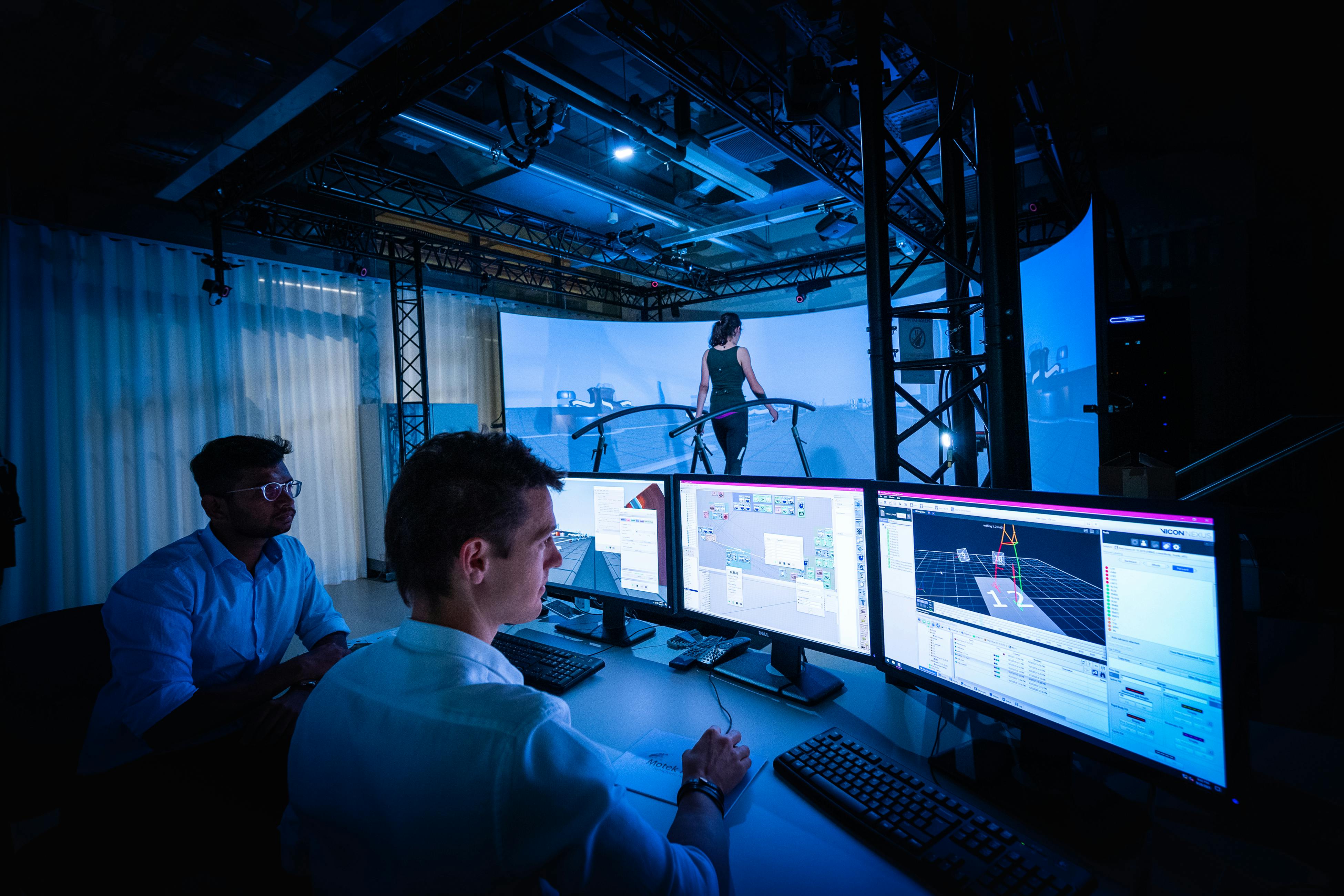
The movements of a study participant are recorded in detail in the gait analysis lab.
Improving patients’ walking functions with virtual reality
The first stage of the StimuLOOP project involves measuring patients’ gait. «We are carrying out the studies in a state-of-the-art gait laboratory with a virtual reality environment, which is one of only few comparable labs in Europe», adds Meret Branscheidt (see video below). Here, detailed recordings will be made of participants’ movements. The measurements will include, for example, the angle of the individual joints and the symmetry of the walking movement. The researchers also want to find out how good the patients’ balance is, what forces their legs exert on the ground and what their muscle activity is like. «Combined with measurements taken in patients’ everyday lives by sensors on their arms and legs, this gives us a complete individual picture of their gait,» says Andreas Luft.
Then comes the therapy. During training sessions lasting between one and two hours, the patients are helped to improve the way they walk. They are given direct feedback which can be in visual form, for example a laughing face on a screen when they make a movement correctly. Feedback can also be provided by sensors that vibrate when a patient successfully compensates for a deficit.
Mental strategies to combat sudden freezing up
The situation with Parkinson’s is somewhat different. Many patients have already had electrodes implanted in the brain to help improve their symptoms. These are now being used as part of gait training. They not only enable areas of the brain to be stimulated in the lab, they also read nerve signals at the same time. «Those participating in the study can directly observe their nerve signals on a tablet during training sessions. They will learn to regulate their brain activity using their own imagination in such a way that their ability to walk improves», explains Roger Gassert, Professor of Rehabilitation Engineering at the Department of Health Sciences and Technology at ETH Zurich. A common symptom of Parkinson’s is «freezing of gait». This refers to a phenomenon whereby patients suddenly freeze up and cannot move their own feet. «The aim is for our patients to learn mental strategies in order to unfreeze», Roger Gassert reveals, «similar effects can then be achieved as with drug therapies or stimulation with electrodes for example.»
«Consolidation» takes place during sleep
In the next step, what both study groups have learned is reinforced. This consolidation process takes place during sleep. The brain can be helped to store information by influencing its activity while the person is asleep. During phases of deep sleep, rhythmic sequences of sounds are played through headphones that the stroke patients have been given. Scents are used to consolidate Parkinson’s patients’ learning. These are administered via a tiny tube in the patient’s nose during daytime training and then again overnight to reinforce the learning effect. The patients spend three consecutive nights in hospital.
The clinical and pure research being carried out in the StimuLOOP project involves University Hospital Zurich, the University of Zurich, and also University Children's Hospital Zurich. Professor Reto Huber from the Department of Developmental Pediatrics was responsible for developing the sleep interventions. ETH Zurich is also making an important contribution to the project in the form of the teams led by Roger Gassert, Professor of Rehabilitation Engineering, and Professor William Taylor from the Institute for Biomechanics. Some of the measurements are carried out in the ETH gait analysis lab. In addition, the team headed by Professor Julia Vogt at ETH will take responsibility for the data management.
The study, entitled «Precise sensorimotor neurorehabilitation through personalized stimulation loops», will last four years and is scheduled to run from September 2022 until December 2026. Researchers are looking for patients suffering from Parkinson’s or who have suffered a stroke and whose diagnosis was not longer than six months ago. They should be restricted in their walking but be able to stand without assistance and take a few steps on their own. Participants will undergo thorough examination and questioning by a physician upon admission to the «cereneo» clinic. The duration of the study is 29 days.
Interested? Contact Professor Andreas Luft MD.
Listen
Andreas Luft (Audio file in German)
«My central goal is to be able to offer patients new forms of therapy»
Professor Andreas Luft MD is Chief of Service at the Department of Neurology of University Hospital Zurich, Head of the Stroke Team at the Stroke Center Zurich, and a professor in the Faculty of Medicine at the University of Zurich.
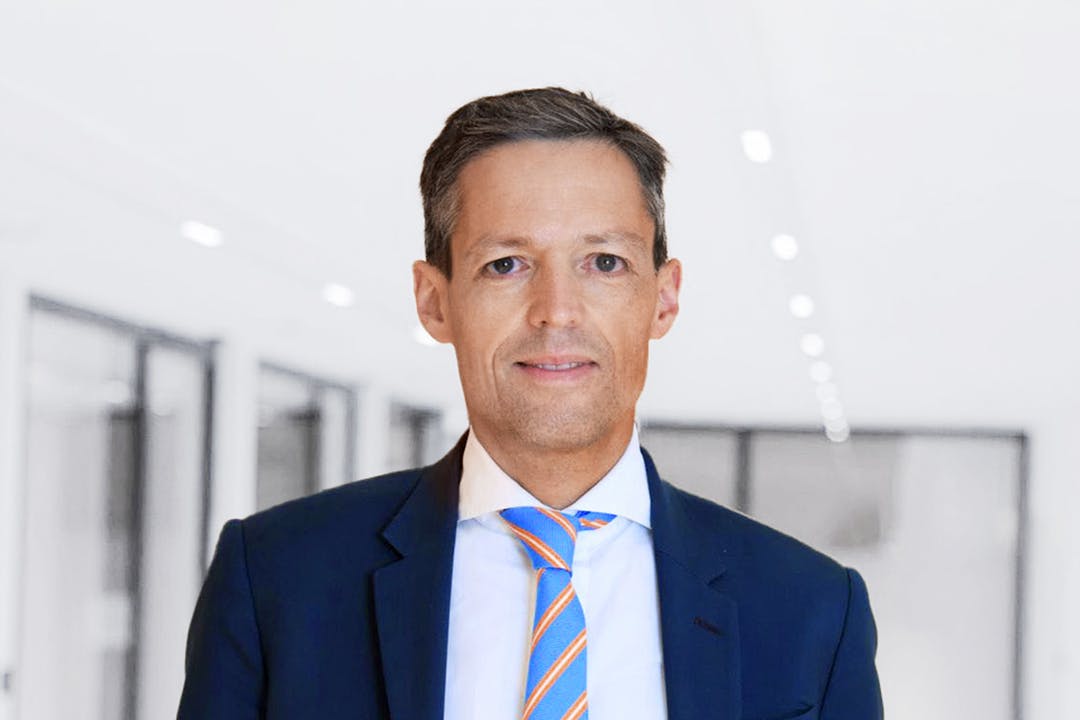
Roger Gassert (Audio file in German)
«We are using stimulators to study brain signals in patients with Parkinson’s»
Professor Roger Gassert is Professor of Rehabilitation Engineering at the Department of Health Sciences and Technology at ETH Zurich.
Watch
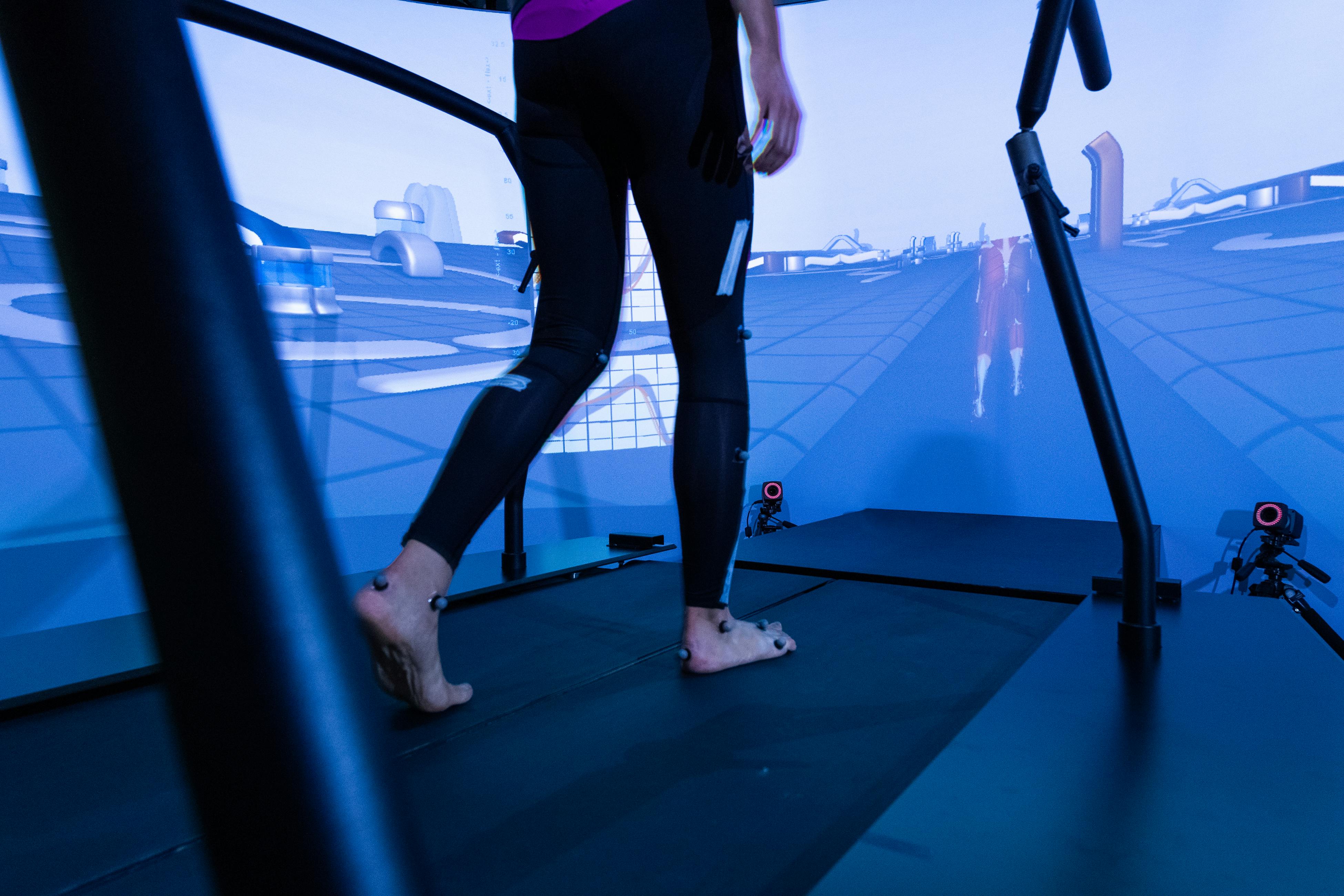
Virtual reality in the gait analysis lab: The patient on the treadmill receives targeted feedback so that she can learn to normalize her movements.
Service
Would you like to take part in the study?
Contact Professor Andreas Luft MD
How to recognize a stroke
FAST test
Stroke and Parkinson’s clinics:
Stroke Center Zurich
Center for Movement Disorders USZ
Sleep disorders:
Consultations at USZ
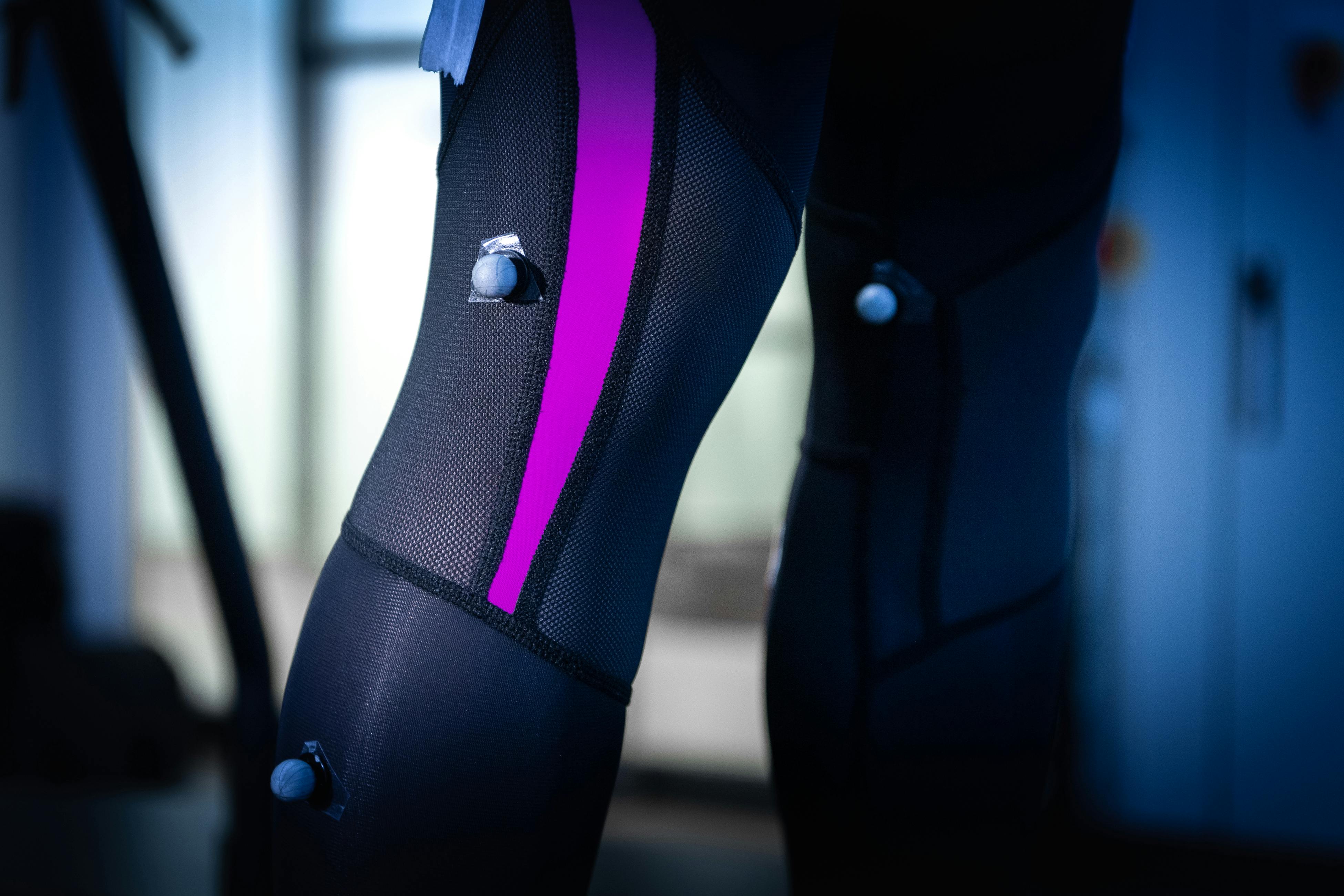

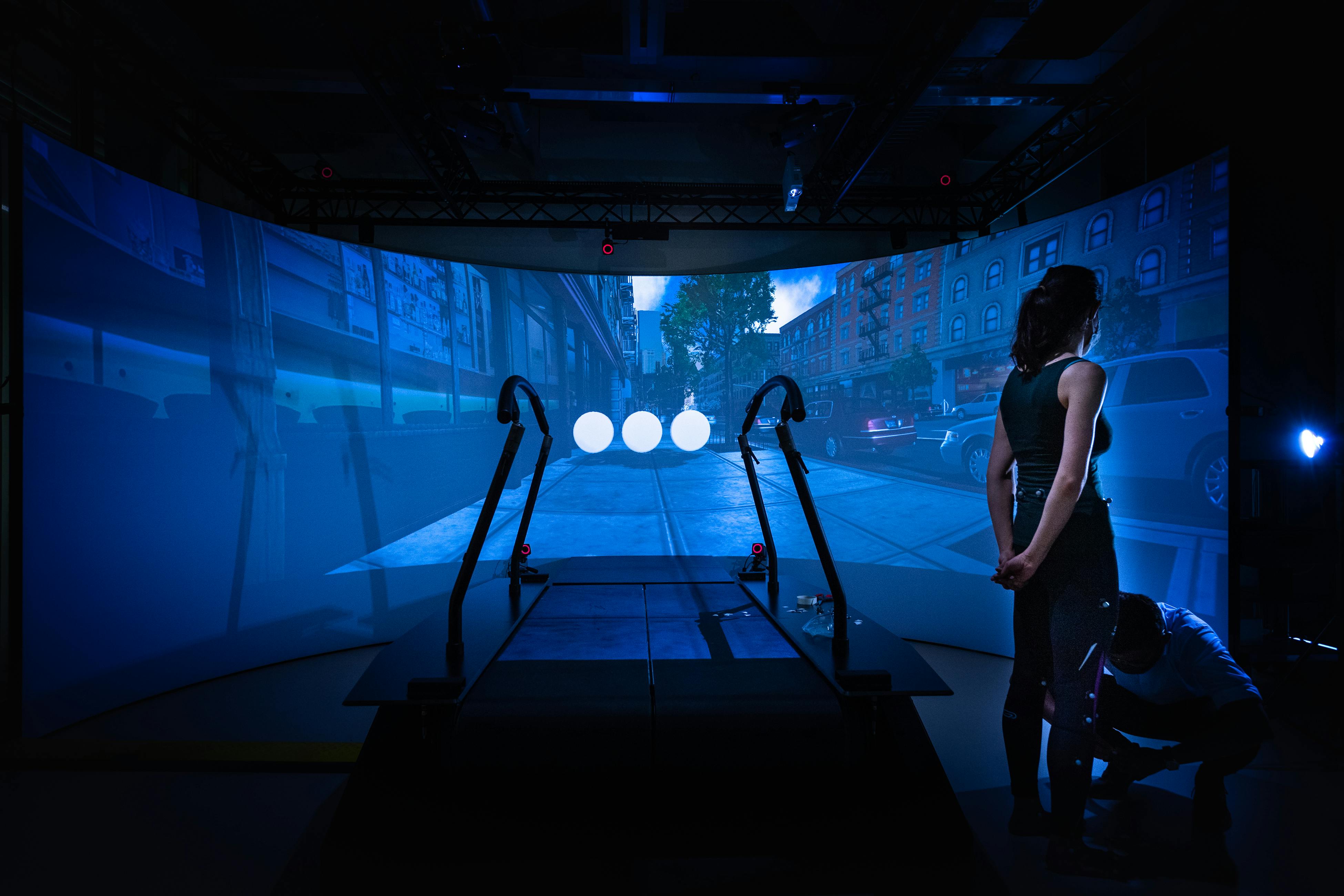




Glossary
Ischemic stroke:
A blood vessel in the brain becomes blocked and this more or less cuts off the tissue that is connected to it from the flow of blood. As a result, there is no longer an adequate supply of oxygen and sugar to this part of the brain. If this situation continues for some length of time, the brain cells in this area will die.
Hemorrhagic stroke:
The most common cause of this type of stroke is high blood pressure. The excessive pressure puts strain on the blood vessels over time and can cause them to burst. If this happens in the brain, it causes a brain hemorrhage. The blood leaving the blood vessel applies mechanical pressure to the surrounding tissue and kills off the nerve cells.
Parkinson’s disease:
This is one of the most common chronic medical conditions affecting the nervous system. Around 15’000 people in Switzerland suffer from it, with men being affected slightly more often than women. Most people are over the age of 60 when they are diagnosed. Parkinson’s sufferers have increasing difficulty with everyday movement such as walking, writing, and fine motor skills. Although research into the disease is being carried out all over the world, its cause remains unknown and no cure is available. What many people are unaware of, however, is that new therapies can significantly improve sufferers’ quality of life.
Precision medicine (previously known as personalized medicine):
Every person is different. The ways in which we become ill and recover also differ. Alongside our genetic predisposition, factors such as environmental influences, lifestyle, age, gender, and other illnesses also play a role. Precision medicine combines genetic analyses with other technologies from molecular and cell biology, imaging, computing, and data analysis to generate and analyze a full range of patient data. This makes it possible to give a much more accurate diagnosis and to find treatments that are tailor-made for the patient.
Who is co-financing this project? (in CHF millions)
The LOOP Zurich - Medical Research Center
Vontobel-Stiftung
The project funding lasts from 2021 to 2026
Credits
Text and audio: Rebekka Haefeli
Pictures: Frank Brüderli
University of Zurich: Andreas Luft, Reto Huber
University Hospital Zurich: Andreas Luft
University Children’s Hospital Zurich, Department of Developmental Pediatrics: Reto Huber
ETH Zurich: Roger Gassert, William Taylor
The LOOP Zurich - Medical Research Center: Jens Selige





